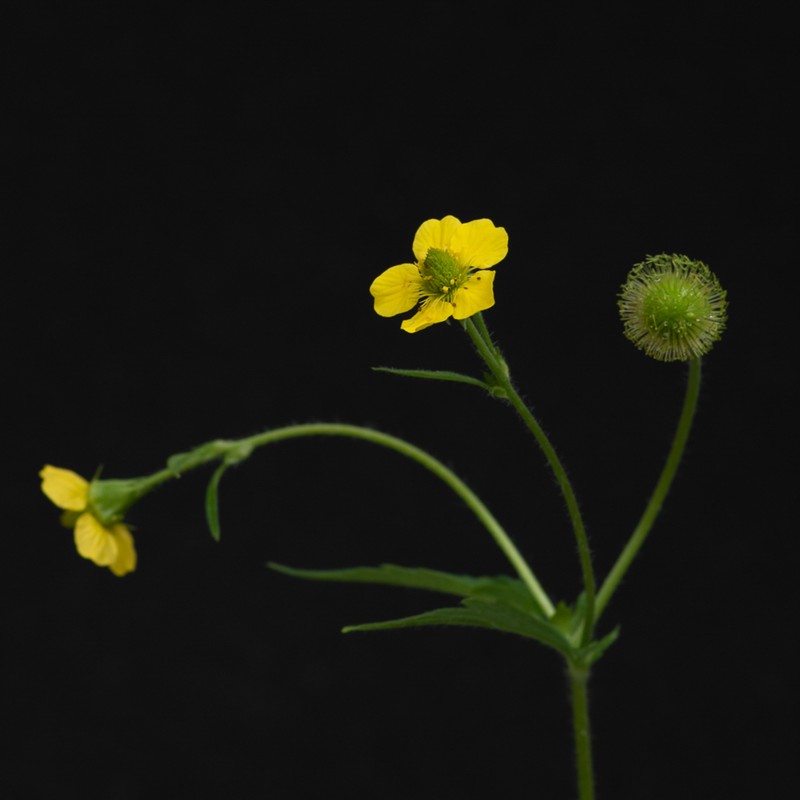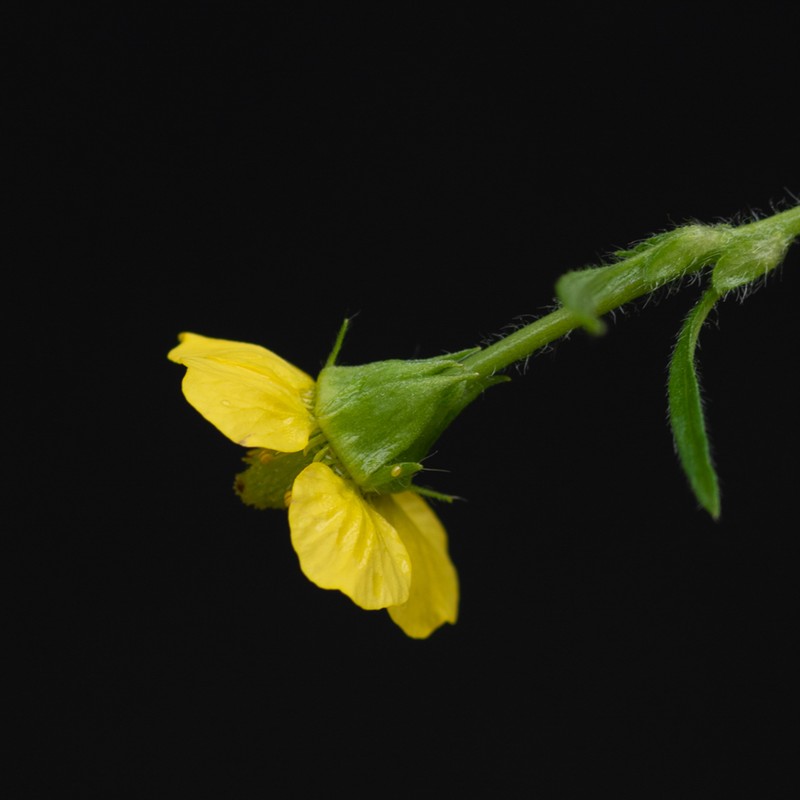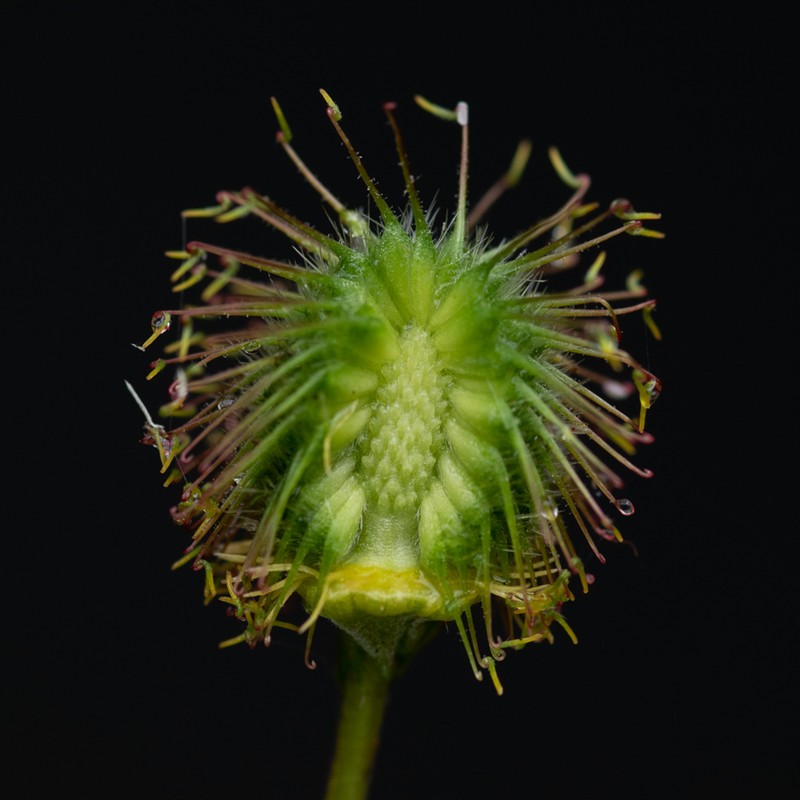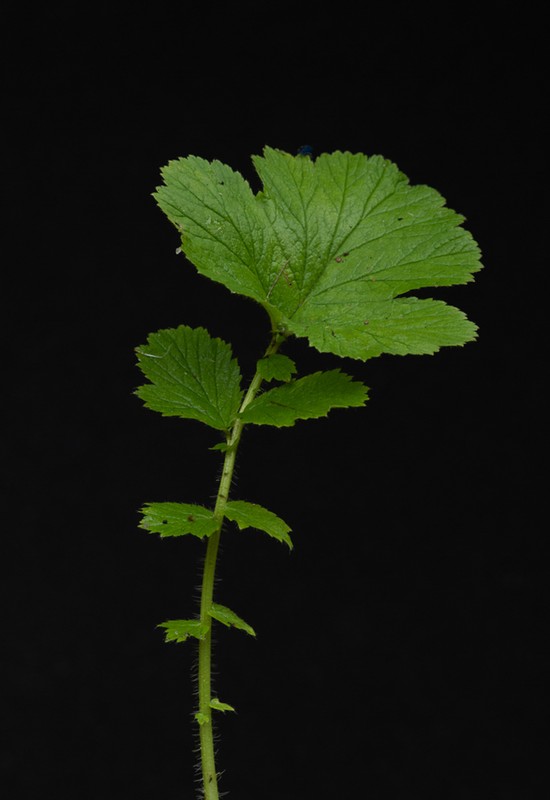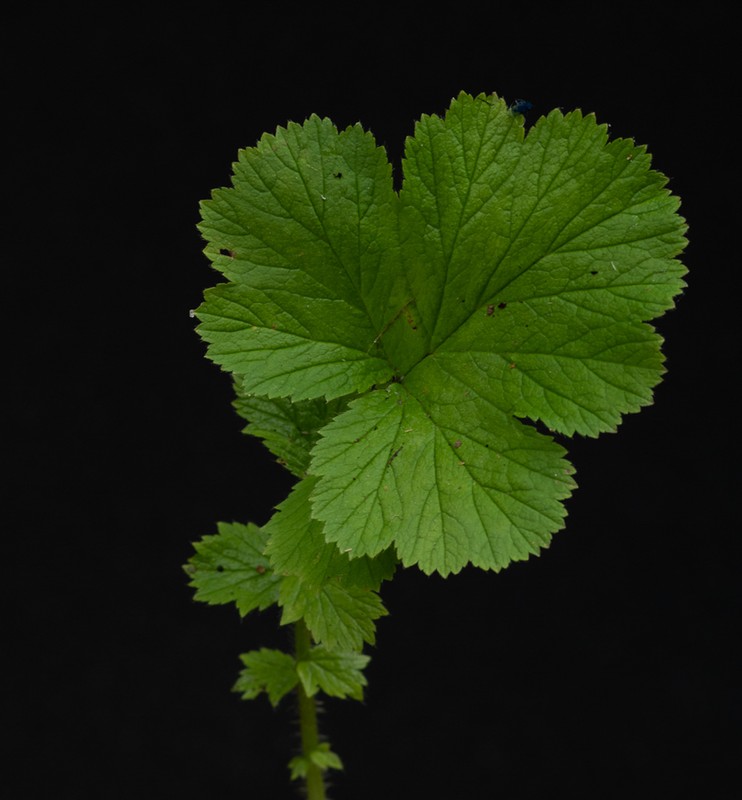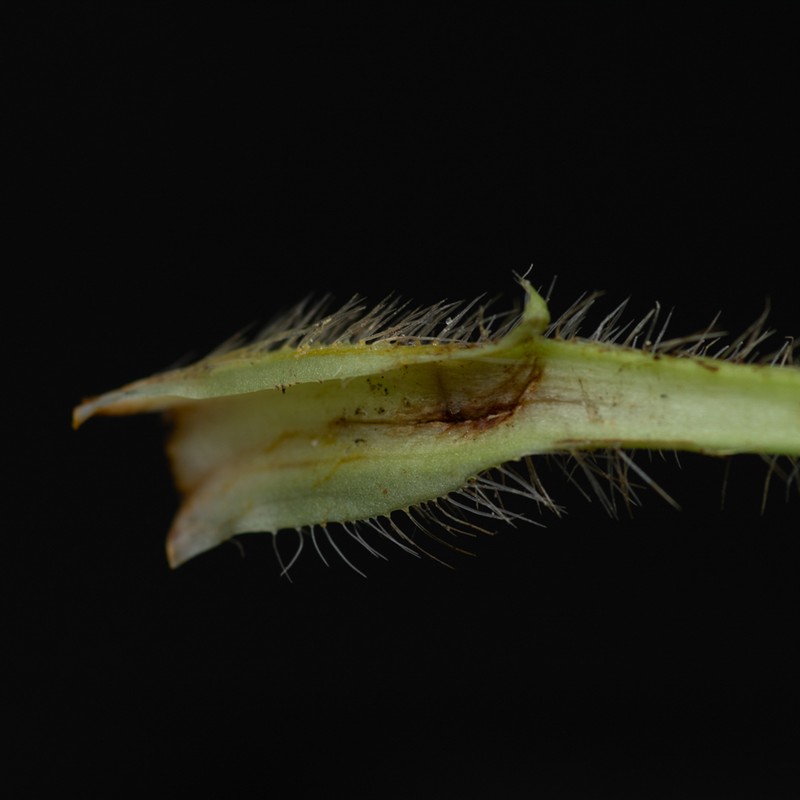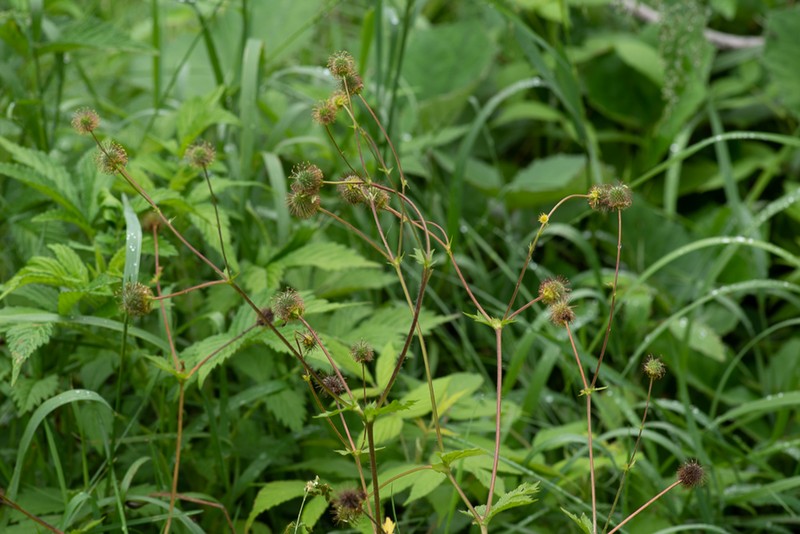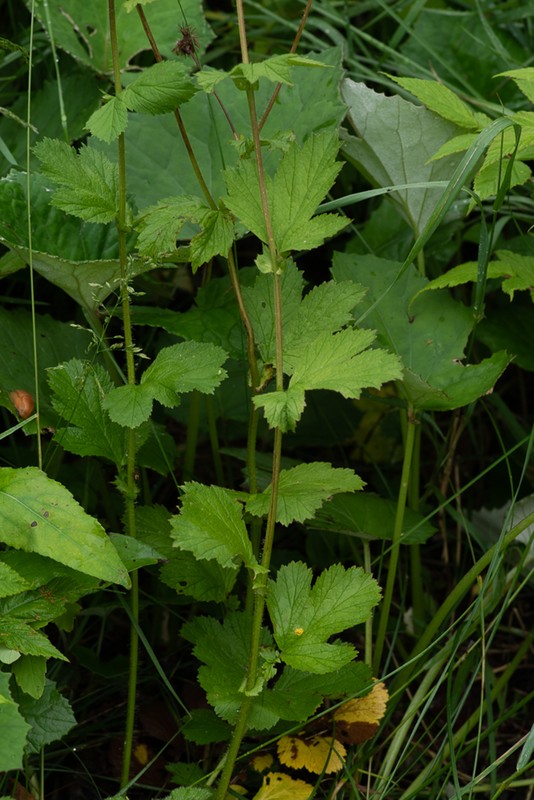Large-leaved Avens
Geum macrophyllum var. macrophyllum None
- Class
- Dicotyledoneae (Dicots)
- Family
- Rosaceae (Rose Family)
- State Protection
- Endangered
Listed as Endangered by New York State: in imminent danger of extirpation in New York. For animals, taking, importation, transportation, or possession is prohibited, except under license or permit. For plants, removal or damage without the consent of the landowner is prohibited.
- Federal Protection
- Not Listed
- State Conservation Status Rank
- S1
Critically Imperiled in New York - Especially vulnerable to disappearing from New York due to extreme rarity or other factors; typically 5 or fewer populations or locations in New York, very few individuals, very restricted range, very few remaining acres (or miles of stream), and/or very steep declines.
- Global Conservation Status Rank
- G5T5
Secure globally - Both the species as a whole and the subspecies/variety are common in the world; widespread and abundant (but may be rare in some parts of its range).
Summary
Did you know?
The leaves and roots of Geum macrophyllum were used medicinally by native Americans. The species name refers to the large terminal leaflet on its basal leaves.
State Ranking Justification
There is one record from 1984 which has not been resurveyed and there is no detailed information about its condition. There is another recent record from the Catskills. There are 12 additional historical occurrences from the Adirondacks and Catskills which need to be checked.
Short-term Trends
Short-term trends are unknown because there has not been recent survey work to determine the present status of the species.
Long-term Trends
This species has recently been put on the active list and there have not been enough surveys of historical records to determine trends. The species is restricted to the higher elevations of the Adirondacks and Catskills, so its distribution is limited, but it may still be common in those habitats.
Conservation and Management
Threats
Any human disturbance that would affect the woodland habitat where this plant grows, such as logging, or development, could be a threat. Woodland invasive species such as shrub honeysuckles or barberry could also be a threat.
Conservation Strategies and Management Practices
Management needs are unknown until more survey work is done.
Research Needs
Surveys are needed to determine its present distribution.
Habitat
Habitat
More information is needed on the habitat affinities of this species in New York state. It has been collected only from relatively high-elevation sites in the Catskills and Adirondacks, including mountain summits, stream headwaters, and shaded stream banks (New York Natural Heritage Program 2007). Moist woods and rocky ledges, sometimes weedy (Gleason and Cronquist 1991). Northern hardwoods, especially along borders, trails, clearings, and rivers; meadows and ditches (Voss 1985). Rich woods, damp thickets, and openings (Fernald 1970).
Associated Ecological Communities
- Hemlock-northern hardwood forest*
(guide)
A mixed forest that typically occurs on middle to lower slopes of ravines, on cool, mid-elevation slopes, and on moist, well-drained sites at the margins of swamps. Eastern hemlock is present and is often the most abundant tree in the forest.
- Rocky headwater stream*
(guide)
The aquatic community of a small- to moderate-sized perennial rocky stream typically with a moderate to steep gradient, and cold water that flows over eroded bedrock, boulders, or cobbles in the area where a stream system originates.
* probable association but not confirmed.
Range
New York State Distribution
This species has been found in only one county in the Catskill Mountains, and one in the Adirondacks.
Global Distribution
Bigleaf Yellow Avens is found in eastern Canada and adjacent US states from Labrador to Ontario and Maine to Michigan, is disjunct west to the Pacific Northwest, Idaho, and Montana, and also found north to Alaska and East Asia.
Identification Comments
General Description
Bigleaf Yellow Avens is a perennial herb with hairy stems growing up to 1 m tall. The lowest leaves have long petioles, with the terminal segment round or kidney-shaped, often 3-lobed, and 5-12 cm, with the segments closer to the stem much smaller. The upper leaves are 3-lobed. The flowers are erect with green sepals and 5 yellow petals surrounding the many stamens and pistils. The fruit are achenes, on an egg-shaped head (receptacle), and are animal-dispersed by the long, hooked, persistent styles.
Best Life Stage for Proper Identification
This species is most easily identified when flowers and developing or mature fruit are present.
Similar Species
Geum aleppicum and G. rivale also may have large terminal leaflets on their basal leaves. G. aleppicum is non-native and weedy, and has a pilose (soft-hairy) receptacle (glabrous in G. macrophyllum). Geum rivale, usually found in marshes, has nodding flowers with crimson or purple sepals, and a stalked receptacle (sessile in G. macrophyllum).
Best Time to See
Bigleaf Yellow Avens may flower from late May through early August, and fruits in late August to early September.
- Flowering
- Fruiting
The time of year you would expect to find Large-leaved Avens flowering and fruiting in New York.
Large-leaved Avens Images
Taxonomy
Large-leaved Avens
Geum macrophyllum var. macrophyllum None
- Kingdom Plantae
- Phylum Anthophyta
- Class Dicotyledoneae
(Dicots)
- Order Rosales
- Family Rosaceae (Rose Family)
- Order Rosales
- Class Dicotyledoneae
(Dicots)
- Phylum Anthophyta
Additional Common Names
- Bigleaf Yellow Avens
Additional Resources
Best Identification Reference
Fernald, M.L. 1950. Gray's manual of botany. 8th edition. D. Van Nostrand, New York. 1632 pp.
Other References
Clemants, Steven and Carol Gracie. 2006. Wildflowers in the Field and Forest. A Field Guide to the Northeastern United States. Oxford University Press, New York, NY. 445 pp.
Gleason, Henry A. and A. Cronquist. 1991. Manual of Vascular Plants of Northeastern United States and Adjacent Canada. The New York Botanical Garden, Bronx, New York. 910 pp.
Haines, Arthur and Thomas F. Vining. 1998. Flora of Maine. A Manual for Identification of Native and Naturalized Vascular Plants of Maine.
Holmgren, Noel. 1998. The Illustrated Companion to Gleason and Cronquist's Manual. Illustrations of the Vascular Plants of Northeastern United States and Adjacent Canada. The New York Botanical Garden, Bronx, New York.
New York Natural Heritage Program. 2010. Biotics database. New York Natural Heritage Program. New York State Department of Environmental Conservation. Albany, NY.
New York Natural Heritage Program. 2024. New York Natural Heritage Program Databases. Albany, NY.
Newcomb, Lawrence. 1977. Newcomb's Wildflower Guide: An Ingenious New Key System for Quick, Positive Field Identification of the Wildflowers, Flowering Shrubs, and Vines of Northeastern and North-Central North America. Little, Brown and Company. Boston.
Voss, E.G. 1985. Michigan Flora. Part II. Dicots (Saururaceae - Cornaceae). Cranbrook Institute of Science and University of Michigan Herbarium. Ann Arbor, Michigan. 724 pp.
Weldy, T. and D. Werier. 2010. New York flora atlas. [S.M. Landry, K.N. Campbell, and L.D. Mabe (original application development), Florida Center for Community Design and Research http://www.fccdr.usf.edu/. University of South Florida http://www.usf.edu/]. New York Flora Association http://newyork.plantatlas.usf.edu/, Albany, New York
Weldy, Troy W. and David Werier. 2005. New York Flora Atlas. [S.M. Landry, K.N. Campbell, and L.D. Mabe (original application development), Florida Center for Community Design and Research. University of South Florida]. New York Flora Association, Albany, NY. Available on the web at (http://newyork.plantatlas.usf.edu/).
Links
About This Guide
Information for this guide was last updated on: February 1, 2023
Please cite this page as:
New York Natural Heritage Program. 2024.
Online Conservation Guide for
Geum macrophyllum var. macrophyllum.
Available from: https://guides.nynhp.org/bigleaf-yellow-avens/.
Accessed July 27, 2024.
